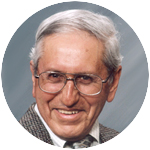
Moises Sandoval
“What do you do for pain?” longtime friend Emma Gomez asked me one day. Since she has been a model Catholic, except that now at age 91 she can no longer drive herself to church for daily Mass and Communion, I thought she was looking for the standard catechism answer: “I just offer it up.” I was not being flip.
But it was not the answer she wanted. Everyone is looking for the magic pill or other medication that will banish pain.
Big Pharma has made billions of dollars by creating opioid painkillers, some a thousand times more powerful than morphine, once the painkiller of choice. In Colorado, where recreational marijuana is legal, an ointment of that drug, according to my brother Ray, quickly relieves chronic pain in one of his arms. The quest to dull or banish the pain with liquor, pill or drug is never-ending.
[hotblock]
The advent of another Lent reminds me that I come from a society that courted pain. New Mexico is home to a society of uncertain origins that performed flagellations during Holy Week in a windowless “morada” or lodge and on Good Friday engaged in a realistic Way of the Cross, sans the crucifixion itself. One of the Penitentes, as they were called, carried the cross while his fellow penitents whipped his bloody bare back with leather quirts.
For me, a boy not yet 10 years old, that was the main attraction on Good Friday. Led by laypeople, men and women, we gathered in a humble chapel near our farm on a barren foothill slope 7,500 feet above sea level in northern New Mexico.
After the Stations of the Cross, we processed in a chill wind toward the Penitentes’ “morada.” They, in turn, marched toward us, both groups stopping 30 yards apart, praying and singing hymns. My brothers and I always tried to be at the head of the procession so we could see the Christ figure but got only fleeting glimpses.
(Read this column and other CatholicPhilly.com content in Spanish.)
My favorite Franciscan, the late Fray Angelico Chavez — poet, historian, fiction writer and, of course, a fellow New Mexican — did not see the Penitentes as alien.
In a book titled “My Penitente Land: Reflections on Spanish New Mexico” (1974) about the relationship of our high desert homeland to our faith, he wrote: “We … are all Penitentes in some way, through blood origins and landscape and a long history of suffering.” For him, the “intimate story of internal beliefs and yearnings,” is shaped not only by history’s long journey but by topography and climate.
[tower]
In that perspective, the desert is key to our encounter with God. That is why Jesus went there to prepare for his mission. If the city is a testament to man’s conceit that he is in control, the ruler of the universe, the desert is the opposite.
Life there is at its most elemental, hanging from a thread. Survival is never assured. There we control nothing. Lent draws us there, to reflect on how puny we are, how dependent we are on God for life, health, prosperity, survival.
We go there to get away from the din of the crowd, to seek the quiet places where we can reflect on who we are and where we are going. Fasting detoxifies, physically and spiritually; prayer and meditation reorient us to the good. If there is no desert around us, we create a virtual one, plumbing the depths of silence, calming our frenetic life.
St. Paul wrote: “I drive my body and train it, for fear that, after having preached to others, I myself should be disqualified” (1 Cor 9:27).
PREVIOUS: Why defending Cardinal Pell is a problem
NEXT: What to take, what to leave behind, on the journey



Share this story